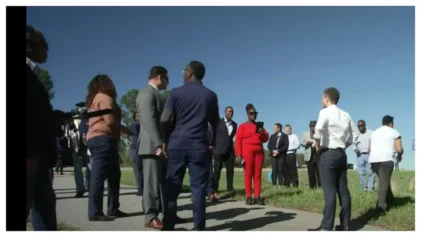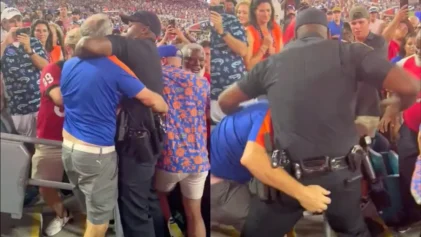Just because you’re paranoid doesn’t mean no one is out to get you.
That sentence may very well summarize the lives of black men in America.
People often tire of hearing the oft-repeated claim that, in America, it is open season on black men. To many, it is nothing more than perpetual whining by a population they think needs to be more closely scrutinized anyway. Others say there’s not much that can be done about it—so pull up your big boy pants and live with it.
There is, however, so much to try to live with:
In 2011, the New York City Police Department, under its controversial stop-and-frisk policy, made more stops of young black men in the city than their total number in the city’s population. The Wall Street Journal reported that the number of stops of black men between the ages of 14 and 24 (168,126) exceeded the total city population of black men in that age range (158,406), according to ThinkProgress.org.
And while the city’s police commissioner credits stop-and-frisk with a 50 percent reduction in crime between 2003 and 2011, only 172 more guns were found despite a half million more stops, a spike from one gun for every 266 stops in 2003 to one per every 3,000 stops in 2011.
Furthermore, while blacks and Latinos were more likely to get frisked, they yielded a smaller percentage of weapons (1.8 percent) than whites (3.8 percent).
Oh, but we’re just getting warmed up.
CBS television station WKMG in Orlando, Fla., reported recently that an entrepreneur was selling gun range targets that feature references to the late Trayvon Martin. Martin’s face does not appear on the target, but it features a hoodie with crosshairs aimed at the chest, with a bag of Skittles tucked in a pocket and a hand holding a can of what appears to be iced tea, the items the teenager was carrying before he was shot and killed by George Zimmerman, a neighborhood watch member who has pleaded not guilty to second-degree murder in the case.
Even Zimmerman’s attorney knows this is a bad idea.
“This is the highest level of disgust and the lowest level of civility,” Zimmerman’s attorney Mark O’Mara told WKMG, expressing concern about the impact on Martin’s family and the potential for increasing tensions in the broader community.
“It’s this type of hatred—that’s what this is, it’s hate-mongering—that’s going to make it more difficult to try this case,” said O’Mara.
An unidentified person purporting to be the creator of the gun range targets and a website to sell them emailed WKMG reporter Mike DeForest, writing, “My main motivation was to make money off the controversy.”
The seller would not disclose how many paper targets had been made, but said in the email, “The response is overwhelming. I sold out in two days,” including some to two Florida gun dealers.
Speaking of Florida, police there charged 10 members of a neo-Nazi group with plotting to launch and prosecute a race war by targeting buildings and dwellings in Orlando known to be occupied or frequented by minorities.
FBI agents and a team of terrorism task force officers began corralling suspects the weekend of May 4-6, largely on intelligence provided by an undercover informant who infiltrated the organization known as the American Front (AF) nearly 17 months ago.
Then, of course, there was the April 6 shooting spree by two white men in the predominantly black section of Tulsa, Okla., which left three people dead and two wounded; the “Don’t Re-Nig in 2012” bumper stickers targeting President Obama; and story after story about racial profiling of blacks and Latinos running from New York to Belleville, Ill., to St. Louis to Eau Claire, Wisc., and beyond.
It is hard not to belabor a point that insists on remaining so prominent in public consciousness—even as one considers that many people never thought they would live to see a black man become president.
What is clear, however, is it is possible to be paranoid and right.


